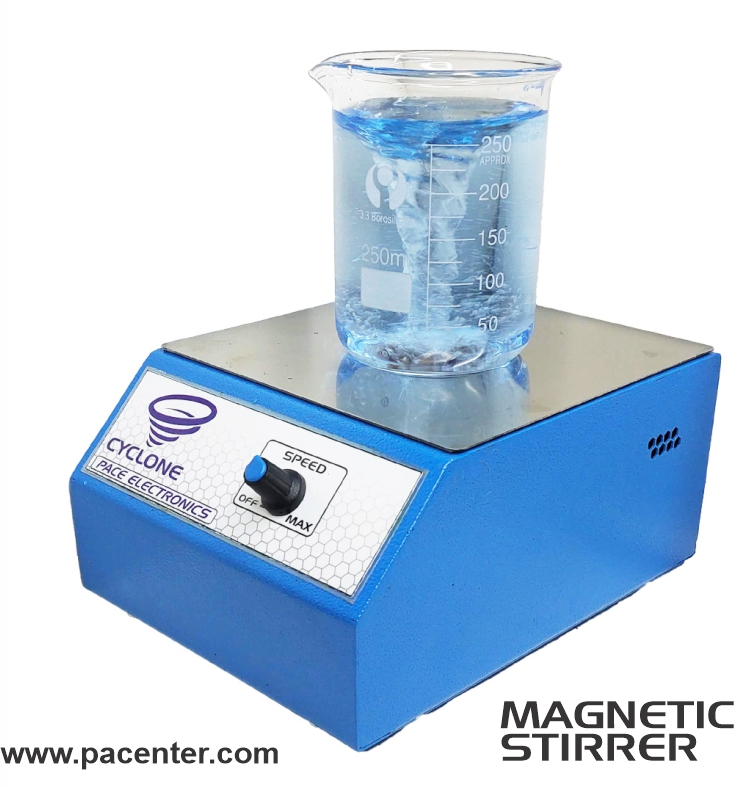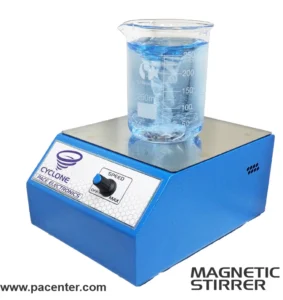Magnetic Stirrer in Pakistan
Elevate Your Lab Experiments with Magnetic Stirrer
A magnetic stirrer is an essential piece of laboratory equipment used to mix liquids efficiently and consistently. Whether you’re conducting chemical experiments, preparing solutions, or working on other scientific applications, a magnetic stirrer simplifies the process with precision and ease. In this article, we’ll explore its features, applications, and how it enhances laboratory workflows.

Stirring Machine: Very Important Tool of all Lab
If you’re working in a lab, chances you know about a magnetic stirrer. It’s one of those machines which make mixing liquids more smoothly. If you are working in the chemistry or biology field. To save time and effort a magnetic stirrer can be the best choice for ensuring your liquids mix consistently & thoroughly.
What Exactly Is a Magnetic Stirrer?
its a simple & durable device designed to mix liquids. At its main work is by using a magnetic field to spin a small bar inside the liquid, called a stirrer bar. This setup ensures that the liquid gets mixed evenly without much hassle. The magnetic field is generated by the magnetic stirrer plate on which your container sits.
How Does It Work?
The process is straightforward:
- Stirrer Bar: Teflon-coated magnet bar (usually coated in Teflon) is dropped into the liquid you want to mix.
- Top Plate: Under this plate rotating magnetics mount on a DC motor.
- Stirring Action: With magnetic field causes the stirrer bar to rotate, which stirs the liquid continuously.
It’s a simple way to mix liquids without a direct mechanical Stirrer inside the container, reducing the risk of contamination.
Why Use a Magnetic Stirrer?
You might be wondering why a magnetic stirrer is so commonly used in labs. Here are a few reasons:
1. Uniform Mixing
One of the biggest advantages is that it ensures consistent and uniform mixing. Unlike manual stirring, where you might miss some spots or stir unevenly, a magnetic stirrer keeps everything moving at a consistent speed and direction, ensuring that the entire solution is evenly mixed.
2. Speed Control
Many magnetic stirrer machines come with adjustable speed settings, allowing you to fine-tune the stirring speed based on the viscosity of the liquid or the requirements of your experiment. This level of control is crucial in many scientific procedures.
3. Low Maintenance
Since there are no mechanical parts inside the liquid (other than the stirrer bar, which is easy to clean), magnetic stirrers are low maintenance. They don’t break down easily and require minimal upkeep.
4. Compact and Convenient
Most magnetic stirrers are compact, making them easy to move around or fit into tight lab spaces. They’re also simple to use, so you don’t need a lot of training to operate one.
5. Heating Capabilities
Some magnetic stirrers also come with a built-in heating element, allowing you to heat and stir liquids simultaneously. This can be a huge time-saver, especially for reactions that need both heat and consistent stirring. If you need a more advanced setup that requires precise temperature control, consider using a hotplate stirrer, which combines heating with magnetic stirring in one device.
Where Magnetic Stirrers Are Used
Magnetic stirrers are versatile and find use in various scientific fields. Here’s where you’ll often see them:
- Chemistry Labs: In chemistry, magnetic stirrers are perfect for mixing chemical solutions and reagents to ensure complete reactions.
- Biology Labs: In biological experiments, they’re used to mix cell cultures or nutrient media without damaging delicate samples.
- Pharmaceutical Labs: In the pharmaceutical industry, magnetic stirrers help in mixing drug formulations and ensuring the uniform distribution of active ingredients.
- Perfume mixer, In small scale Magnetic Stirrer is the fragrance industry to mix Flavors with
Types of Magnetic Stirrers
There’s more than one type of magnetic stirrer, each suited to different needs:
1. Basic Magnetic Stirrer
This is the simplest version, ideal for basic stirring without any additional features. If you just need to mix liquids at a steady pace, this is the one for you.
2. Heated Magnetic Stirrer
A step up from the basic model, this one also includes a heating element. The magnetic stirrer plate can heat the liquid while stirring it, making it perfect for tasks that require controlled heat and mixing at the same time.
3. Heavy-Duty Magnetic Stirrer
For larger volumes & longer durations of mixing a heavy-duty magnetic stirrer. These models are equipped with strong magnetic & brushless motors to handle up to 3 to 5L.
4. Multi-Position Magnetic Stirrer
These are ideal for labs running multiple experiments at once. They allow you to stir several containers at the same time, saving you space and time.
If you’re working with particularly viscous materials or require high-power stirring, you might also consider an overhead stirrer. Unlike magnetic stirrers, overhead stirrers are designed for heavy-duty mixing and can handle larger volumes of liquid.
Conclusion
A magnetic stirrer is one of the most useful tools in a lab, whether you’re working with chemicals, biological cultures, or pharmaceuticals. It’s reliable, easy to use, and ensures uniform mixing, which is critical in many experiments. With options like heated stirrers and heavy-duty models, there’s a magnetic stirrer machine for every need.When choosing the right magnetic stirrer for your lab, consider what you’ll be mixing, whether you need heating capabilities, and how much control you need over the stirring process. With the right equipment, you can make your work more efficient and precise, saving both time and effort in the lab.
%magnetic stirrer%

A magnetic stirrer is an essential piece of laboratory equipment used to mix liquids efficiently and consistently. Whether you’re conducting chemical experiments, preparing solutions, or working on other scientific applications, a magnetic stirrer simplifies the process with precision and ease. In this article, we’ll explore its features, applications, and how it enhances laboratory workflows.
Product Brand: Pace Enterprises
Product Currency: USD
Product Price: 65USd
Product In-Stock: InStock
4.5

2 Comments